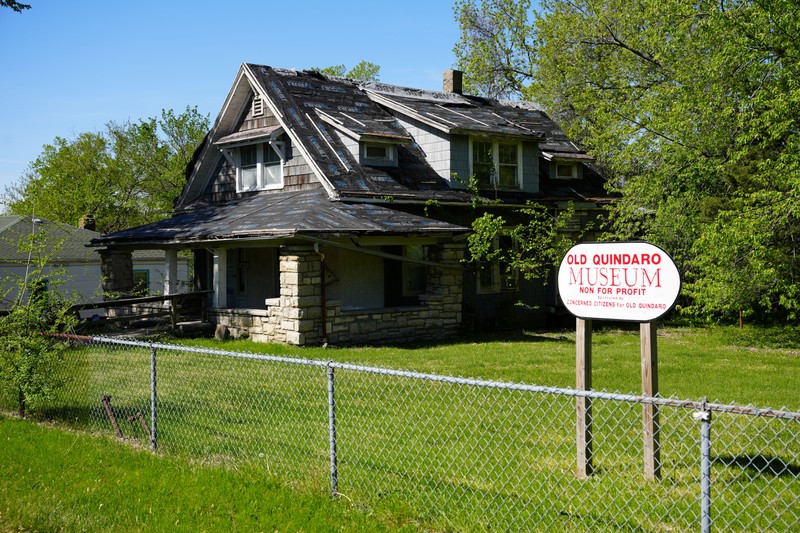The Old Quindaro Museum
Introduction
Text-to-speech Audio
This museum was formed in the aftermath of an attempt create a landfill where the historic ruins of Quindaro are located. The community of Quindaro dates back to the 1850s and was home to a diverse assortment of people including formerly enslaved persons and abolitionists, many of whom also operated businesses. The ruins of two of the community's hotels and a brewery have been preserved, and this museum was created to help preserve artifacts and the history of this largely African American community and its history and the larger history of early Wyandotte County. The museum was founded by Jesse Hope offered exhibits that shared the history of African Americans in the Old Quindaro Township from 1856 to the present. The current state of the museum as indicated by posts on its Facebook page in 2018 indicate that the building has fallen into disrepair.
Images
The museum was established by community members and its building is in need of repairs.

Backstory and Context
Text-to-speech Audio
When a request was mailed to every property and landowner in the area of Old Quindaro in 1982, the citizens of the town became worried. The request was for a “Special Use” permit for Browning Ferris Industries to create and run a sanitary landfill. The Landmark Commission did not pass the permit in 1983, but the Kansas City, Kansas Commission did. It was after this that a group of people from the area came together to talk about the issue that would affect their area. During this meeting, “The Concerned Citizens for Old Quindaro” was formed, and they created a board of directors with Jesse Hope as the Chairman, Accie Taylor as Vice Chairman, J.C. Clark as Secretary, and Kay Moore as Treasurer. This collection of people, raised funds to challenge the effort to turn their neighborhood into a landfill.
The group was able to hire a lawyer, Grover Hankins from the Basil North Law Firm. Hankins sued Kansas City under the stance that they were being irrational and erratic by their decision to allow the “Special Use” permit, and that it was not right to the citizens of Quindaro. At the same time of this trial, The Concerned Citizens for Old Quindaro managed to get Quindaro named as a historical district. The group lost the trial in 1982 but it allowed for archaeological research in 1984 that found the beginnings of the first “Quindaro Township.” This allowed the Concerned Citizens for Quindaro to protect specific places like Quindaro Park, the cemetery, the ruins, and more places.
The Concerned Citizens for Quindaro have played a large part in creating the Abandoned Cemetery Act and having a large part of the first Quindaro town listed as a historical district. They have also worked to restore the cemetery and prevent littering. The museum itself has an abundance of items that show the tales of enslaved persons who gained freedom in the 1800s in present-day Kansas City as well las the creation of a strong Black neighborhood with schools, businesses, and churches. Some of the items included in the museum are items related to the history of slavery. The National Park Service has credited the museum for its efforts in explaining the past of the Underground Railroad in the United States. It also provides a course known as Roots of Promise that helps explain the town’s past to youth.2
Sources
"About." Old Quindaro Museum. Accessed July 3, 2015. http://www.ccoq.org/about
1: "The Old Quindaro Museum". Old Quindaro Museum. Accessed on July 3, 2015, http://www.oldquindaromuseum.org/history/
2: "Old Quindaro Museum tells the story of slaves in 1800s who found freedom in Kansas." KSHB 41. Accessed on July 3, 2015, http://www.kshb.com/news/region-kansas/kck/old-quindaro-museum-in-kck-tells-story-of-former-slaves-i...
